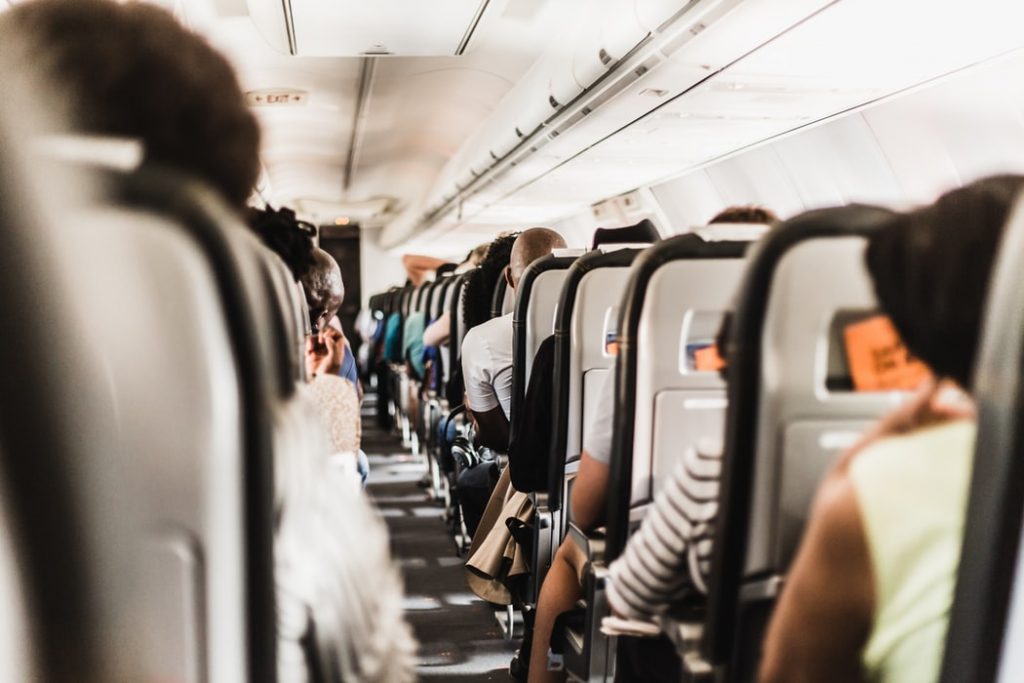If you take long flights regularly, you may have already noticed the toll they can take on your body. Even passengers coming off of flights only a couple of hours long tend to complain of various aches and pains upon landing. Being stuck on a long-distance flight limits your physical activity and throws off your circadian rhythm. It can also leave you feeling bloated or dehydrated. Prevent these problems and stay healthy and comfortable on your next long flight by following these tips:
Use compression stockings
Lower back pain is not the only condition that can result from sitting too long in a cramped plane seat. The position causes blood circulation to slow down, increasing a person’s risk for developing a blood clot or a deep vein thrombosis (DVT). The clot can form in one of the body’s deep veins, usually in one of the legs. It can be very dangerous if the clot breaks off: it will travel through your circulatory system and end up in the lungs, where it will cause a potentially life-threatening pulmonary embolism.
Wearing compression socks can help improve circulation in the legs and prevent DVTs. They are a special type of hosiery made with stronger elastics to apply pressure on the legs and keep blood flowing. They can also help lessen discomfort and swelling in the ankles and feet. Even pilots are known to use compression socks, so there’s no reason you shouldn’t.
Get up and move
Long periods of immobility will inevitably lead to all kinds of body pain. Your usual workout routine may not be suitable for the tight confines of an aircraft, but you can still perform a few simple exercises, even while remaining seated.
Neck rolls and shoulder rolls can relieve some of the muscle tightness, and you don’t have to stand up to do them. Raising your heels off the floor and contracting your calf muscles can also be done while seated, even with your seatbelt fastened. When it’s safe to do so (make sure that the seatbelt sign is off!), go ahead and get up to walk up and down the aisle. Do these exercises every few hours and it should lessen any soreness you’ll feel when you land.
Don’t stuff yourself
Many passengers break the monotony of a long flight by amusing themselves with food. However, overindulging on the in-flight meals and snacks can leave you feeling bloated—or worse, irritate your stomach. Avoid it by sticking to light, healthy foods throughout the journey. Keep off the fatty, salty snacks, as they will only dehydrate you. Instead, choose warm, nourishing dishes from the in-flight menu, or sustain yourself with nutrient-filled protein bars.
Eating a substantial meal before lights out on the plane can negatively affect your sleep quality, too. Prevent this by opting for a lighter meal option and staying away from any late-night snacks before bedtime.
Stay hydrated
Dehydration is one of the most common health problems that can affect a passenger on a long-haul flight. The dry air inside the cabin won’t help it any, either. You’ll want to be well-hydrated before boarding, and staying hydrated throughout the flight should be a priority. Drink plenty of water and limit your intake of liquor and caffeine while in the air.
Your skin will likely need a boost of hydration as well. Use a good moisturizer for your face, hands, and any exposed skin. It’s also a good idea to cover up while inside the cabin with a comfortable jacket or blanket.
Long flights can be a pain, but they’re nothing to be dreaded. Making a few adjustments to your in-flight habits can make them much more bearable. With our tips, you should arrive at your destination feeling fresh and exhilarated.



